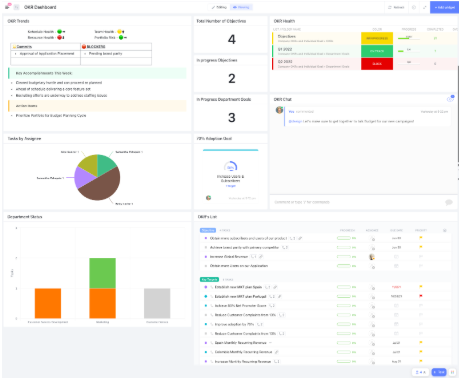Remember when Google’s Bard confidently claimed the James Webb Space Telescope had photographed planets outside our solar system? Entertaining at first, until you consider the real-world implications.
Mistakes like these, when made in sectors like finance, healthcare, or legal, come with a heavy price.
Generative AI is an impressive technology. However, one key challenge remains widespread in enterprise applications: AI “hallucinations,” where generative models produce incorrect or imaginary information, delivered with complete confidence, and the costs are often unbounded when they occur.
Real Risks of AI Hallucinations in Business
AI hallucinations are not a minor inconvenience. They can have serious business consequences.
Examples include compliance violations if your chatbot gives incorrect regulatory advice, financial damage from faulty investment guidance, or damage to brand reputation caused by inaccuracies communicated confidently to customers.
This problem is more common than many realize. Meta withdrew its Galactica model after it produced prejudiced misinformation.
Microsoft’s Sydney chatbot was similarly problematic, once making troubling admissions about internal practices.
These incidents underline the operational risks that come with deploying generative AI without adequate structure or control.
Although the latest models hallucinate far less, they still do, and excruciatingly, they often do so in more subtle ways now than ever before, evading detection.
Why Current Prompt Engineering Methods Fall Short
AI hallucinations typically happen due to three factors. The first factor is reliance on unstructured prompts and poor system prompts, where generative AI models receive vague inputs and are left to interpret meaning independently.
Second, models often lack clear constraints, leading to inconsistent and unpredictable responses.
Third, traditional prompt engineering methods are fragile. Even minor changes can trigger unpredictable and costly errors.
Many companies continue to invest heavily in trying to craft “perfect” text prompts. This approach is expensive and unreliable. It leads to a cycle of constant debugging and re-prompting, draining resources and increasing development time.
Structured Prompting as a Reliable Solution
A more effective approach involves structured prompting. BoundaryML’s AI Modeling Language (BAML) offers a way to generate consistent and predictable AI outputs. It transforms vague prompts into clearly defined functions with explicit inputs and outputs, significantly reducing uncertainty.
BAML achieves this through schema-aligned parsing. This method ensures AI outputs strictly adhere to predetermined formats.
When the AI diverges from expectations, the error becomes immediately clear and actionable. This structure enables quick debugging and significantly enhances reliability.
How Structured AI Reduces Operational Costs
Structured prompting reduces the financial risks associated with generative AI. Each hallucination can trigger expensive debugging processes, requiring developers to retrain models or rewrite entire prompt sets.
By implementing structured methods like BAML, businesses can reduce costly iterations by producing correct outputs earlier. Here is a short video on how we incorporated BAML on a recent project:
Companies adopting BAML have demonstrated notable reductions in AI-related errors, improved compliance metrics, and achieved tangible cost savings.
Building Trustworthy and Scalable AI Systems
Beyond immediate cost savings, structured approaches provide other substantial business benefits.
Outputs generated using BAML can be tested systematically, providing clear insights into potential issues before deployment.
Transparent schemas offer visibility into AI operations, allowing teams to identify problems faster and with greater accuracy.
Structured prompting also ensures better maintainability. Teams can debug more effectively and scale AI systems reliably across the enterprise.
Lastly, and most importantly, structured prompting gives auditability to enterprise applications and operations, which is absolutely pivotal at all companies, particularly those in regulated industries like finance or healthcare.
Practical Recommendations for Executives and Founders
Experienced business leaders understand the importance of stable, scalable infrastructure. AI deployments should simplify operations, not complicate them.
Whether launching a new initiative or integrating AI into an existing environment, structured prompting reduces operational risks and aligns your AI projects directly with measurable outcomes.
This is crucial for founders and executives who have already experienced the operational pitfalls that can hinder growth, particularly in large enterprise, regulated markets like healthcare, finance, or legal.
Take Action: Transition to Structured AI Prompting
Continuing to rely on traditional prompt engineering carries avoidable operational risks. Now is the time to evaluate your current AI workflows critically and identify areas of potential vulnerability.
Structured AI prompting methods like BAML represent a clear path forward. They allow your business to leverage generative AI confidently, focusing on tangible outcomes rather than managing avoidable errors.
. . .
Nick Talwar is a CTO, ex-Microsoft, and a hands-on AI engineer who supports executives in navigating AI adoption. He shares insights on AI-first strategies to drive bottom-line impact.
→ Follow him on LinkedIn to catch his latest thoughts.
→ Subscribe to his free Substack for in-depth articles delivered straight to your inbox.
→ Join the AI Executive Strategy Program to accelerate your organization’s AI transformation.









